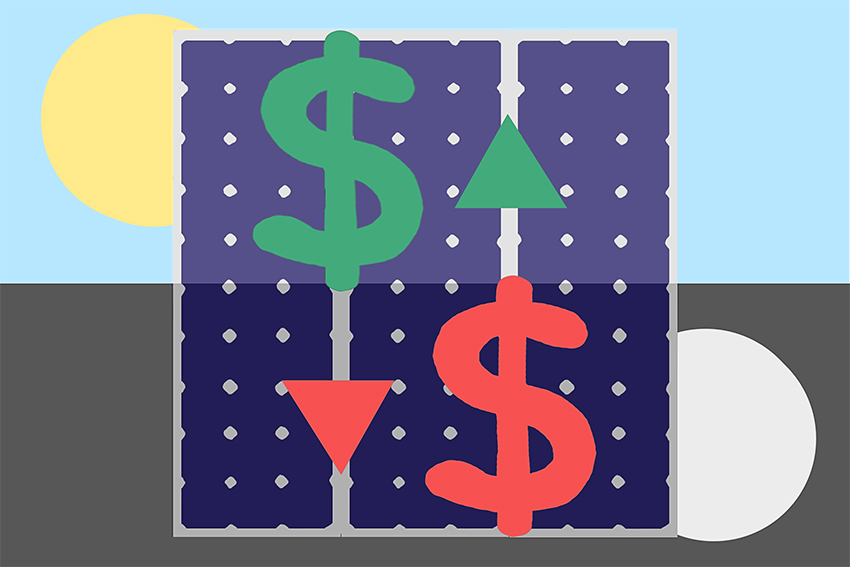Storing solar power can actually increase energy consumption, according to a new UT study.
Michael Webber, professor of mechanical engineering and deputy director of UT’s Energy Institute, and Robert Fares, UT alumnus and current fellow at the Department of Energy, worked together to analyze the total energy use of solar panels equipped with storage capabilities.
“Because (solar panel storage cells) have less than 100 percent efficiency, they end up being energy consumers, and if you use them everyday, you’ll end up seeing an increase in your energy consumption,” Webber said.
Webber and Fares also investigated the economic and environmental costs of solar storage.
“What we wanted to do is critically assess the impacts of power flow into the distribution grid, the consumer’s energy consumption, the impacts on their bills and the impacts on their emissions in the grid system,” Fares said.
They used energy consumption and generation data from UT’s partnership with Pecan Street Inc., a nonprofit organization that collects data on homes in the Mueller community in Austin. The data included information from 99 solar-powered households over the year of 2014.
“Having that data allowed us to see when the storage would actually charge and discharge,” Fares said.
According to Fares, the team was able to quantify the increase in energy consumption caused by a household adding solar storage. Solar storage adds between 324 to 591 additional kilowatt-hours in energy consumption.
“Every time you put energy into a battery device, you don’t get all that energy back — some of it is lost to the energy storage and conversion processes,” Fares said. “For example, for a state-of-the-art lithium ion battery, you get about 85 percent of the energy you put in back out, so if you put one kilowatt-hour of energy in, you’ll get about .85 kilowatt-hours back.”
Fares said the rush towards solar panel storage should wait until there is truly a benefit to consumers in the market. He said in places such as San Antonio, there is currently little to no economic benefit to consumers for storing solar energy. He added that the price of consuming energy is practically equivalent to the money earned back by producing one’s own power.
The greenhouse gas emission levels given off by solar panel storage were of a concern to the researchers as well.
“We figured out that, based on the charging and discharging behaviors found from our models, that (solar) storage leads to a net increase in carbon dioxide, sulfur dioxide and nitrous oxide,” Fares said.
Webber said solar storage is not isolated; storage units are tied to the Texas energy grid.
“The storage by itself doesn’t make the grid cleaner. We have to also clean up the grid,” Webber said.
There are three energy grids located throughout the U.S.: one in Texas, one in the west and one in the east. Every household in America is connected to a power plant that connects to the grid, providing homes with energy and adjusting how much energy it provides according to use. Depending on which plant the energy comes from, Webber said adjustments in solar storage levels can increase greenhouse gas emissions.
“(Solar panel storage) is more damaging to the environment when connected to grids powered by coal and natural gas, so you’re accidentally enabling more emissions,” Webber said. “If you connect your solar panels to a cleaner grid, such as ones powered by water and wind like in Seattle or Norway. Those grids use clean energy, so your emissions will not increase.”















